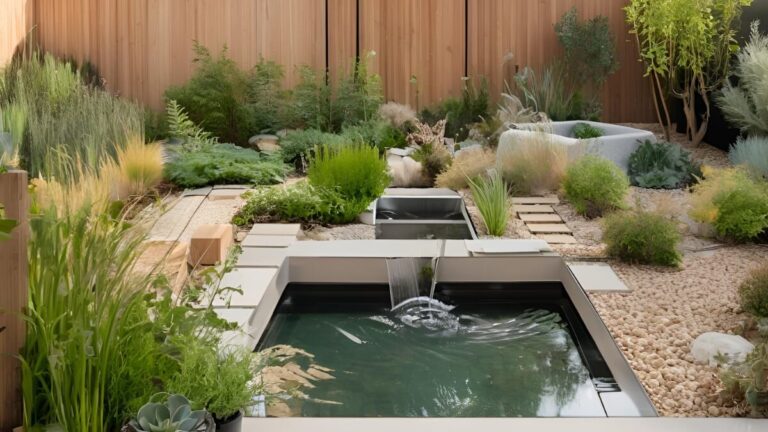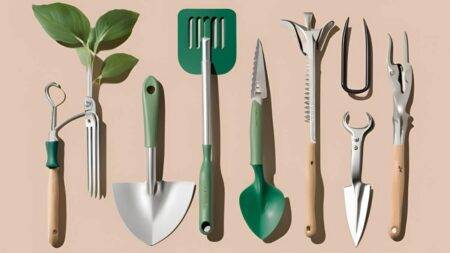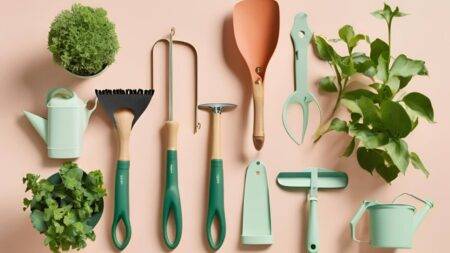Are you eager to transform your garden into a vibrant sanctuary for wildlife? Discover the top elements to attract wildlife to your garden today! By incorporating diverse plants, water features, and shelter, you can create a thriving ecosystem right in your backyard. This guide will walk you through essential steps to make your garden a welcoming haven for birds, butterflies, and other beneficial creatures. Let’s dive into the key components that will help you foster a lively and eco-friendly outdoor space.
1. Diverse Plant Selection
A diverse range of plants is one of the most effective ways attract wildlife to your garden. Different species provide food, shelter, and nesting sites for various animals.
Flowering Plants: Plants that produce nectar and pollen, such as lavender, echinacea, and sunflowers, attract bees and butterflies. These pollinators are crucial for the health of many plants and the overall garden ecosystem.
Berry-Producing Plants: Shrubs and trees like holly, elderberry, and juniper offer fruits that birds find irresistible. They also provide excellent cover and nesting sites.
Host Plants: Specific plants serve as host sites for caterpillars and other insects. For instance, milkweed is essential for monarch butterflies, while parsley and dill attract swallowtail larvae.
2. Water Features
Water is a vital resource for wildlife, serving both as a drinking source and a habitat.
Birdbaths: Shallow birdbaths provide a place for birds to drink and bathe. Adding a few rocks or pebbles at the bottom can help smaller birds access the water.
Ponds: Creating a pond with native aquatic plants like water lilies and cattails can attract amphibians like frogs and toads, as well as provide a habitat for insects.
Running Water: A small fountain or a stream can add a dynamic element to your garden, attracting species that are drawn to the sound and movement of water.
3. Shelter and Nesting Sites
Providing shelter and nesting opportunities is crucial for wildlife to thrive.
Birdhouses and Nesting Boxes: Install birdhouses for different species of birds. Ensure they are placed at varying heights and orientations to accommodate various preferences.
Insect Hotels: These structures offer nesting sites for solitary bees, butterflies, and other beneficial insects. They can be as simple as a bundle of twigs or a more elaborate wooden box with drilled holes.
Brush Piles: Piling up sticks, leaves, and branches creates a habitat for small mammals, insects, and amphibians. It also serves as a safe place for animals to hide from predators.
4. Naturalistic Landscaping
Embracing a naturalistic approach to landscaping can make your garden more inviting to wildlife.
Native Plants: Opt for native plants that are adapted to your local climate and soil. They provide the best food and habitat for local wildlife and require less maintenance.
Mulching: Using organic mulch, such as wood chips or leaves, can create a hospitable environment for insects and improve soil health.
Wildlife-Friendly Practices: Minimize the use of chemical pesticides and fertilizers. These can harm beneficial insects and disrupt the delicate balance of your garden ecosystem.
5. Providing Food Sources
Supplementing natural food sources can make your garden even more attractive to wildlife.
Seed Feeders: Fill feeders with seeds that appeal to various birds, such as sunflower seeds for cardinals and nyjer seeds for finches.
Fruit and Nut Feeders: Offering overripe fruit or peanuts can attract a range of species, including squirrels and woodpeckers.
Insect Habitat: Allowing some parts of your garden to remain undisturbed can encourage insects like ladybugs and spiders, which help control garden pests.
6. Safe Spaces for Wildlife
Creating a safe environment is essential for wildlife to feel secure in your garden.
Avoid Chemicals: Refrain from using harmful chemicals that can poison or deter wildlife. Instead, use organic alternatives for pest control and fertilization.
Safe Passage: Ensure that your garden provides safe routes for wildlife to move around. Avoid using barriers like fences that are too high or wide for small animals to navigate.
Conclusion
Attracting wildlife to your garden is a rewarding endeavor that contributes to biodiversity and supports the local ecosystem. By incorporating diverse plants, providing water and shelter, adopting naturalistic landscaping practices, and offering supplemental food sources, you can create a welcoming environment for a variety of species.
Start small and gradually add these elements to your garden. Observe the wildlife that visits and enjoy the dynamic, ever-changing beauty of your outdoor space. Your efforts will not only enhance your garden but also contribute to the health of the environment. Happy gardening!









18 Comments
Boost your garden’s appeal with key elements like native plants, bird feeders, and water features. These attract diverse wildlife and create a vibrant, eco-friendly haven right in your backyard!
Attracting wildlife to your garden can truly enhance its beauty and biodiversity. I loved the practical tips on creating a welcoming environment for various species. From native plants to water features, these suggestions are perfect for anyone looking to make their garden a haven for wildlife. Can’t wait to try out some of these ideas
“I absolutely love the content on this website! The gardening tips are incredibly detailed and have helped me transform my backyard into a beautiful garden. I appreciate the step-by-step guides, especially for beginners like me who need a little extra help.”
Your garden design ideas are stunning and so practical! The step-by-step guide you provided is perfect for someone like me who’s new to gardening. Thanks for making it easy and enjoyable!
Innovative Ideas – “I appreciate the innovative ideas you share for small space gardening. It’s great to see solutions for those of us with limited space.
Wonderful Community – “I love how this website fosters a community of like-minded gardeners and DIY enthusiasts. The comment section is always buzzing with great advice and tips!
“This blog is a treasure trove of gardening knowledge. I always learn something new every time I visit.”
This site has transformed the way I approach home gardening. It’s inspiring and incredibly informative!
“I’ve been following your safe pest control tips, and I’m already seeing improvements in my garden. Thanks for the eco-friendly solutions!”
This website is a goldmine for anyone looking to improve their gardening skills! So many practical tips and ideas.
“This website is a goldmine for anyone looking to improve their gardening skills! So many practical tips and ideas.”
“Home Garden Live Advice Inc is now my go-to site for home gardening tips. The information is both helpful and easy to understand.”
Attracting wildlife to your garden can truly enhance its beauty and biodiversity. I loved the practical tips.The step-by-step guide you provided is perfect for someone.
“I love that this website provides advice for both small and large garden spaces. Perfect for urban gardeners like me.”
Your blog is amazing! The methods you provide are so clear and helpful. I’ve used them to revamp my home and garden with ease. Thank you for sharing such valuable tips and techniques!
Great Resource! – “I love how informative your articles are! They provide detailed advice that has truly helped improve my gardening skills. Keep up the great work!
Boost your garden’s appeal with key elements like native plants, bird feeders, and water features. These attract diverse wildlife and create a vibrant, eco-friendly haven right in your backyard!
“It’s amazing how the garden attracts so many butterflies and bees; it’s like a little wildlife haven.”